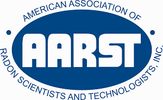Contact us for a FREE quote!
What is Radon?
Radon:
Radon is a radioactive gas that has been found in homes all over the United States. It comes from the natural breakdown of uranium in soil, rock and water and gets into the air you breath. Radon typically moves up through the ground to the air above and into your home through cracks and other holes in the foundation.

What is Radon?

What is Radon Mitigation?
Why Radon Mitigation?
Radon Mitigation in Iowa is the process used to reduce concentrations of radon gas in your house to ensure that it is suitable for human occupancy. Anyone can find and use the simple radon testing kits at most major hardware stores to determine if radon mitigation is necessary. These kits also offer directions as a do-it-yourself project. However, as simple as “reducing radon levels” sounds on paper or in a kit, radon mitigation is generally not recommended for the “average handyman” according to Health Association Agencies.
Radon Testing
Radon testing is the only way to detect your indoor radon levels in your home or business. Without radon testing you will not know if you need radon mitigation help or not. This is the most important and first step to take to ensure your home or business is safe from health risks of radon gas exposure.

Are you protected?
How Radon Enters The Home
Radon travels along the path of least resistance to enter a home. Radon invades homes through floor drains, sump crocks, cracks and crevices in the foundation and even the water supply.
why Have your home tested today?

Radon and Lung Cancer
Don't put your family at risk in your own home
1 in 15 homes have high levels of Radon
It is estimated that 21,000 Lung Cancer cases per year are related to Radon. Radon is the nations second leading cause of lung cancer.

1 in 15 homes have high levels of Radon
Don't put your family at risk in your own home
1 in 15 homes have high levels of Radon
The U.S. EPA and the Surgeon General's Office have estimated that as many as 20,000 lung cancer deaths are caused each year by radon. Radon is the second leading cause of lung cancer. Radon induced lung cancer costs the United States over $2 billion dollars per year in both direct and indirect health care costs.

Don't put your family at risk in your own home
Don't put your family at risk in your own home
Don't put your family at risk in your own home
Stay safe and have your home tested today!
Facts about Iowa

High Level of Concern
The Iowa Radon Survey has indicated that Iowa has the largest percentage (or 71.6%) of homes above the US Environmental Protection Agency action level of 4pCi/L. It is also designated by the US EPA as an entirely zone 1 state, which means that at least 50% of the homes are above US EPA's recommended action level.
The Solution To Radon

Radon Reduction Systems
Active soil depressurization (ASD) has proven to be a cost-effective and reliable technique for radon reduction, by collecting the radon from beneath the building before it can enter. The systems can be simple or complex, depending upon the design of the building. Operating costs of the fans are minor, due to their low power consumption (typically less than 90 watts per fan).
The System draws the radon-laden soil gas from beneath the foundation and exhausts it outside of the building, far enough away from windows and other openings that it will not reenter. The system typically consists of a plastic pipe connected to the soil through a hole in a slab floor, through a sump lid connection, or beneath a plastic sheet in a crawl space. Attached to the pipe is a quite, continuously operating fan that discharges the radon outdoors.
The system design is a function of the construction of the home, rather that the radon concentrations in the home. A home with more than one foundation can present challenges to collecting the soil gas from under all portions of the building. However, trained mitigation contractors can sometimes connect multiple systems together so that only one fan system is required.
Facebook Reviews
Homeadvisor Reviews
Reviews
Subscribe
Sign up to hear from us about specials, sales, and events.
Certifications



